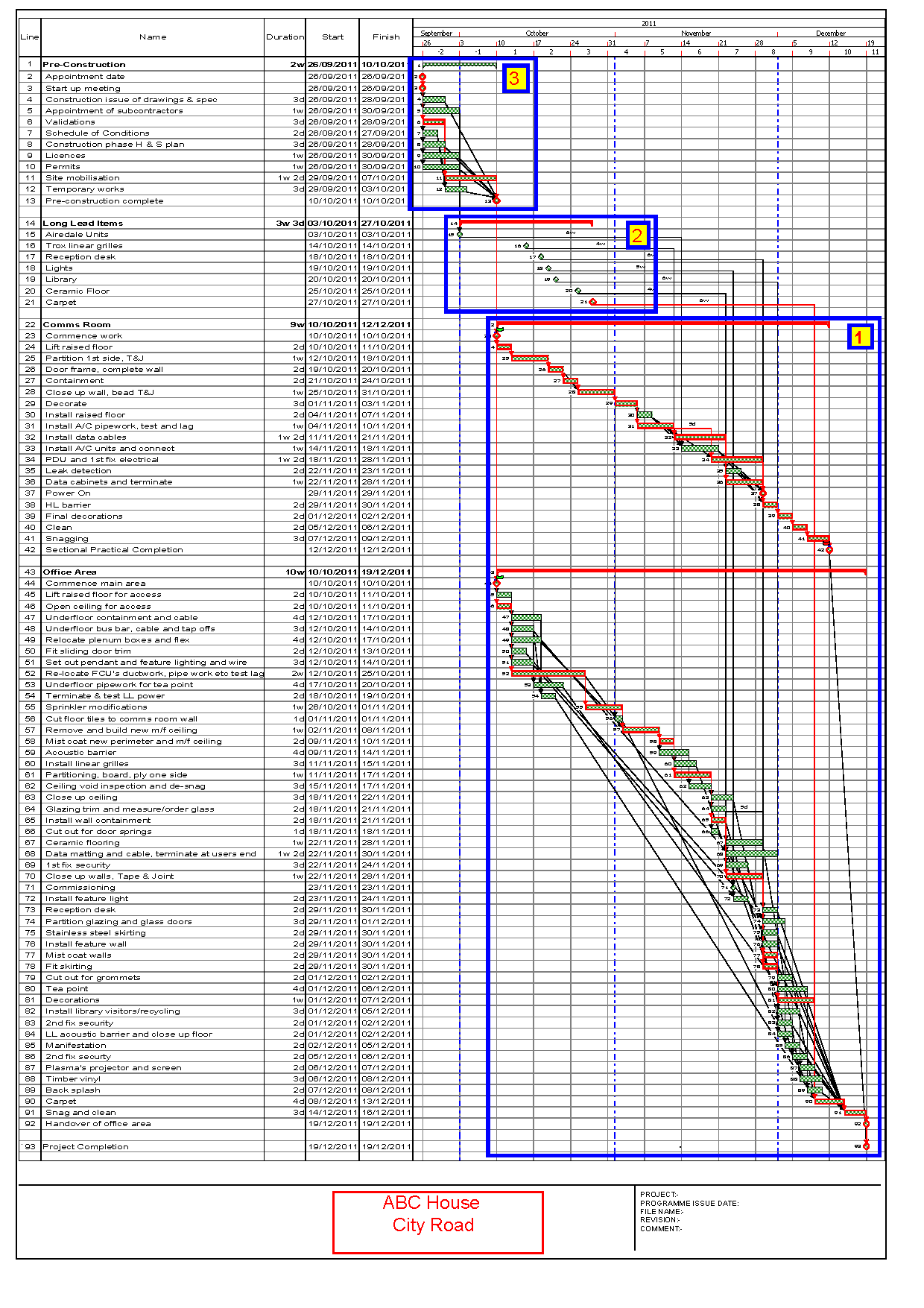This is an example of a programme representing an office fit out of a traditional type contract. In fact, I used this programme in my ebook How to Write Construction Programmes & Schedules. With this type of procurement the principle contractor tenders and submits their quotation and if successful the client issues a letter of intent. A letter of Intent (often shortened to L of I) binds the client and contractor in a legal agreement up to a value stated on the letter. The intent is that both sides will sign a formal contract with terms and conditions.
My following example shows the programme divided into three ‘chucks’. Each ‘chunk’ represents a different stage of the project:-
Click the image to open a new page and zoom in and see more detail.
Click the image to zoom in:-
- Construction programme – This is the schedule of the actual construction work and demonstrate the sequence how the building is assembled. (Box 1 on example).
- Lead times – This is amount of time required to manufacture, procure, purchase elements of the building e.g. Joinery. Also, a period of time for other aspects such as workshop drawings, sample approvals, drawing approvals and sign offs. (Box 2 on example).
- Pre-construction – An allowance of time for pre-construction tasks are required e.g. sub-contractor appointments, mobilization, surveys, validations, site set up etc. (Box 3 on example).
Like examples shown on other pages I’ve drawn three blue boxes around the three ‘chunk’ of the program and numbered each box 1 to 3 and I always draft the construction works first and this shown in box labled 1. It may seem strange to draft the construction element first but is does actually make sense that all preceding tasks whether it be adminstration or design needs to be carried out at the correct time to prior to construction. Hence the reason for drafting the construction phase first.
Next I list the long leads and linked them down to the times required on site (shown in box 2). Notice, that I indicate the item with a milestone that represents the point in time to order the long lead. My other examples show the long leads durations as bars. The bars are further divided into coloured segments representing a different stage of the the long lead process. However, with this simple programme there’s no need to over complicate its appearance – this may put people off from using it and defeat it ‘s prime purpose.
Finally I list of pre-construction tasks (shown in box 3) and linked down to the earliest package to be let.




